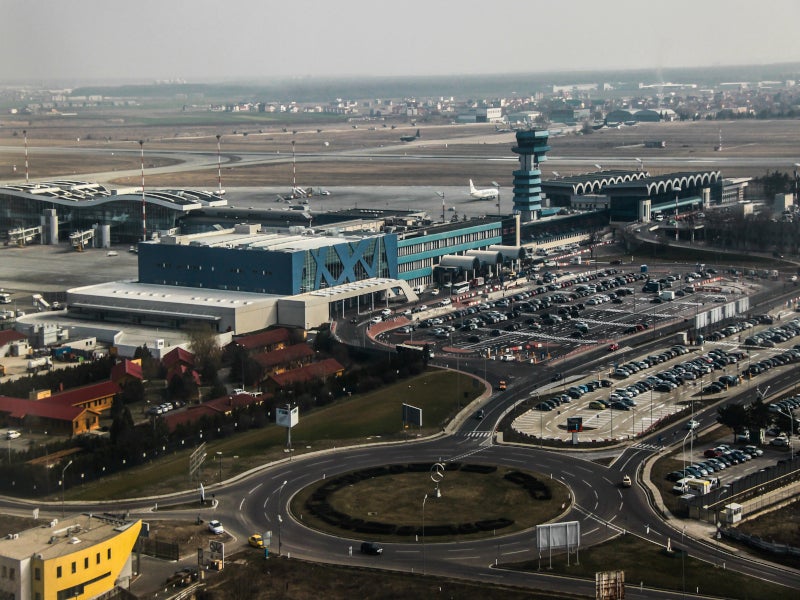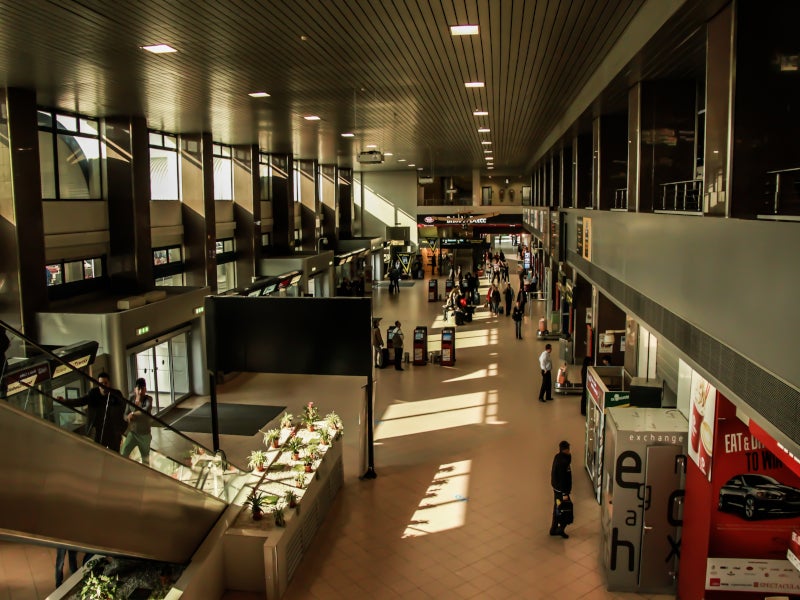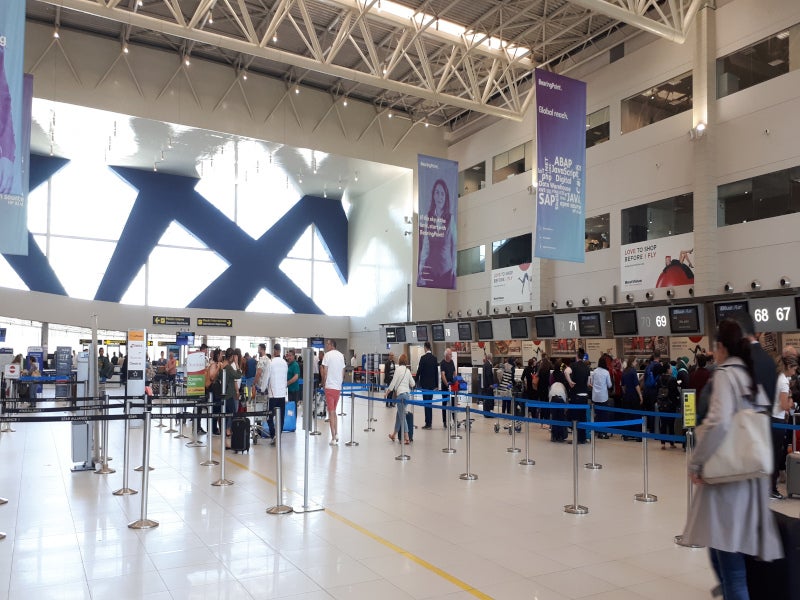Henri Coanda International Airport, located 17km northwest of Bucharest, is the primary international airport of Romania. Previously known as Bucharest Otopeni International Airport, it is the largest and busiest airport in the country and features two runways and a helipad.
The latest expansion project at the airport is part of the Bucharest Henri Coanda Airport Capital Investment Plan, released in 2022. It aims to enhance the airport’s infrastructure to boost operational resilience, safety and passenger experience.
Major upgrades include rehabilitating one of the main runways and taxiways, renovating the baggage handling system, upgrading aircraft parking stands and improving the airside area of the airport.
The Henri Coanda Airport is served by 45 airlines, transporting passengers to 128 destinations.
Henri Coanda International Airport expansion details
The 2022 expansion plan of the airport includes widening of Apron 1 towards north – work valued at 21.1m lei ($5m). The apron widening includes four new aircraft stands.
The plan also includes the replacement of two of the existing 14 airbridges, upgrades of seven airbridges and the construction of a new passenger airbridge equipped with a visual docking guidance system.
The capacity of the airport is being increased in three phases. Phase I expansion, being undertaken with an investment of 308m lei, involves increasing the operational capacity of the airport by optimising aircraft operations on taxiways and increasing the number of parking spaces.
Phase II expansion includes major repair upgrades on Alpha, Bravo and Gulf taxiways. It also includes upgrading and widening of Apron 1 and 2 towards south up to Bravo and towards east up to Delta. It is expected to be completed in 2027 and involves an estimated investment of 801m lei.
Phase III expansion includes increasing the capacity of the 08R–26L runway. The scope of work includes rapid exit taxiways, multiple runway end holding positions, extension of the Bravo taxiway parallel to the 08R-26L runway between Delta taxiway and 26L threshold, and aircraft de-icing and anti-icing aprons for the 08R-26L runway ends. This phase is expected to finish in 2028 and involves an estimated investment of 834.6m lei.
The airport will have 20 additional long-term parking spaces equipped with electric car chargers. The parking lots will be built near the thermal power station no 1 by 2025 with an estimated investment of 72.4 lei.
Additionally, 86 parking lots will be constructed near to the departures terminal (66) and the TAROM (20) building. The multilevel arrival car parking will also be upgraded and consolidated. The north parking lot will have 669 spaces, and the west car park will have 1,019 spaces. 109 spaces will be reserved for taxis.
The interiors of arrivals and departures terminal will be refurbished with improved air conditioning system, airport signage, furniture, fire detection, and extinguishing and electrical systems. These works will be completed by 2025 with an investment of 139m lei.
Other terminal modernisation works include upgrades to baggage conveyors, hand baggage security control systems and replacement of hold baggage processing equipment to increase the final capacity to 2,400 pieces per hour. Construction of a wastewater treatment plant and photovoltaic power station at the airport will also be undertaken.
Airport runways
Henri Coanda International Airport has two 3,500m-long asphalt runways, which are designated as 08R/26L and 08L/26R.
The modernised Delta runway became operational in July 2020. The Delta taxiway has a load-bearing width of 23m, framed by 7.5m wide sidewalks. The runway can ensure the unrestricted taxiing of Category E aircraft such as Boeing 777-300.
Road and rail infrastructure
The Henri Coanda Express train, which runs from the airport to Bucharest North railway station, provides connectivity between Bucharest and the airport. The airport station is located 900m from the terminal building and is connected through buses.
Previous expansion details
The $123m Phase I of the development and modernisation project of Henri Coanda International Airport took place in 1994-98. In 1997, a new international departures hall with a capacity of 1,200 passengers per peak hour along with five air bridges was created by expanding the main terminal building.
In 2000, Phase II of the development programme, with an investment of $100m, was initiated and included the renovation of the international arrivals hall. It included the development of a parking facility at the arrivals hall, which had three levels and space for 900 cars. Another domestic hall featuring a capacity of 200 passengers per peak hour was opened.
The airport underwent an expansion under Phase III of the development and modernisation project, which increased the capacity of the terminal to six million passengers a year. The €150m ($185m) project was completed in 2012.
Under the expansion, the international departures hall was extended by 5,500m² (59,201ft²), adding 42 check-in desks. The international arrival hall was also expanded by 2,000m². The boarding area of the airport was extended by 6,000m², which included the addition of up to 12 air bridges.
The VIP lounge was also expanded by 1,500m², and a 16,000m² turnaround bay area for a 26L runway was built. The new car parking area includes a space of 12,000m².
The expanded passenger terminal can handle a total of 4,500 (3,600 international and 900 domestic) passengers per hour during peak times. A total of 24 boarding gates, 86 check-in desks and five baggage belts are featured in the international hall, with eight boarding gates, 18 check-in desks and two baggage belts in the domestic hall.
Contractors involved
The contractor for Phase I and Phase II of the previous development and modernisation project of the airport held in the 1990s was Romairport, an Italian-Romanian joint venture. The joint venture was formed by Italstrade, SEA-Aeroporti di Milano and CCCF Bucharest.
Alstef Group, a baggage handling solutions provider, was awarded a contract for the baggage system replacement and screening upgrade at the airport in June 2022.
The scope of work includes 56 new check-in conveyors, 12 self-service bag drops, a new outbound sortation system with five new standard three screening machines, two new make-up carousels and a connection to the domestic terminal.
Henri Coanda Airport history
Henri Coanda International Airport was used by the German Air Force as an airbase during the Second World War, and later by the Romanian Air Force until 1965. It underwent development in 1965 when the runway was extended from 1,200m to 3,500m, and a new building for domestic and international passengers was constructed.
The passenger terminal building was renovated in 1970 to accommodate 1.2 million passengers annually. In 1986, it underwent another overhaul with the construction of a second 3,500m runway. Taxiways and the airport lighting system were also improved, which enabled the airport to handle 35 to 40 aircraft an hour.
In 1992, the airport became a member of Airports Council International.






